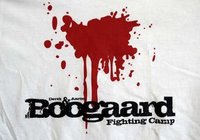 i’ve had little time online or elsewhere the past few weeks, as i’ve struggled to keep pace with chair / editor / teacher / scholar / father duties. one story that caught my eye, however, came via amelia at the crawler. apparently, slaughterhouse workers on the killing floor exhibit relatively high rates of post-traumatic stress. similarly, communities with slaughterhouses exhibit relatively high rates of violent crime.
i’ve had little time online or elsewhere the past few weeks, as i’ve struggled to keep pace with chair / editor / teacher / scholar / father duties. one story that caught my eye, however, came via amelia at the crawler. apparently, slaughterhouse workers on the killing floor exhibit relatively high rates of post-traumatic stress. similarly, communities with slaughterhouses exhibit relatively high rates of violent crime.
i haven’t assessed the researchers’ causal claims, but the finding fits my experience growing up around the south st. paul stockyards and nearby processing plants. i knew a few shell-shocked former cattle-killers who ran screaming to minimum-wage restaurant jobs at a fraction of their former pay. i remember one tough-guy cook whose probation officer set him up in some kind of full-time throat-slitting or bludgeoning job. it was a good job, he said, but he just couldn’t cut it.
the story is timely, since tomorrow marks south st. paul’s last cattle auction. it was evidently the world’s busiest livestock market when i was growing up, but the yards have been empty for years. i wonder whether south st. paul is becoming significantly less stressful or violent…

